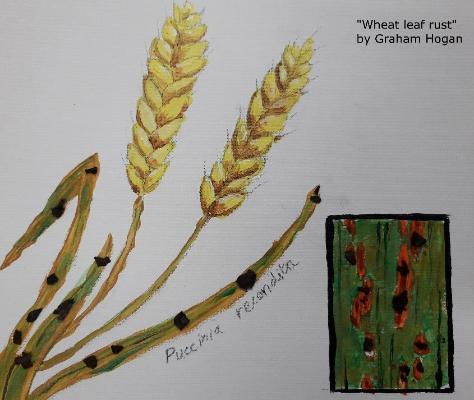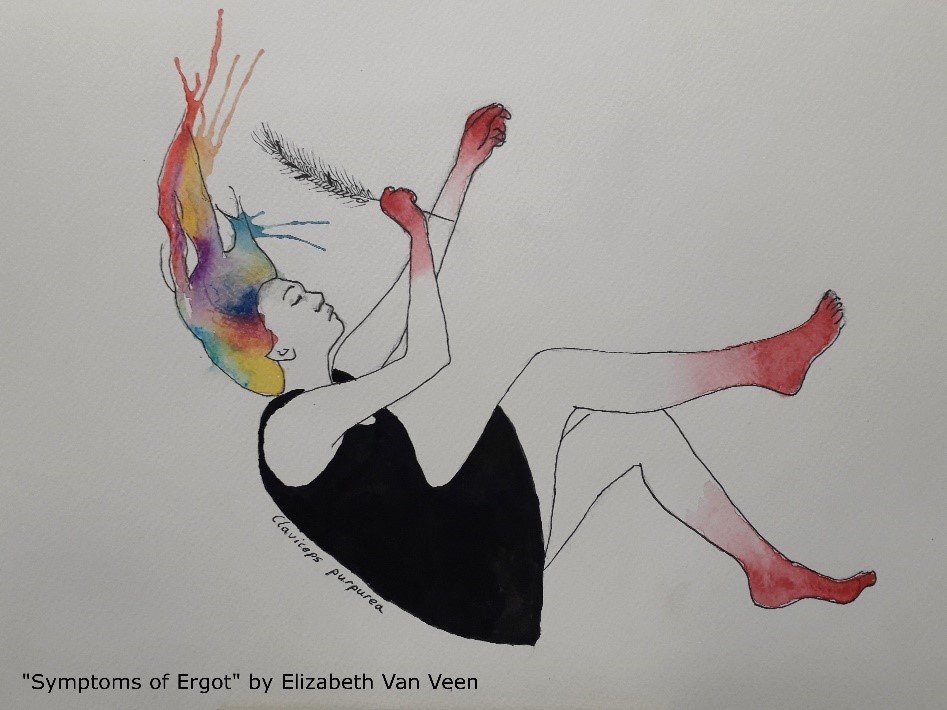In This Section
- CIRTL Homepage
- Meet our Team
- Resources
- Short Guides
- Short Guide 1: Starting Well
- Short Guide 2: Scaffolding Learning
- Short Guide 3: Icebreakers
- Short Guide 5: Discussions for Online Learning
- Short Guide 4: Visualising Thinking
- Short Guide 6: Universal Design for Learning
- Short Guide 7: Group Work
- Short Guide 8: Reimagining Practicals
- Short Guide 9: Assessment in the Age of AI
- Sustainable Development Goals Toolkit
- Group Work
- Connected Curriculum
- Civic Engagement Toolkit
- Learning Outcomes
- DigiEd Reading List
- Ethical Use of GenAI Toolkit
- Short Guides
- Professional Development
- Events
Hashtag SciArt

Dr Eoin Lettice, Lecturer in Plant Science in the School of Biological Earth and Environmental Sciences, wanted to provide his students with a unique assessment opportunity. Conscious of final year students’ heavy workload, a workload which includes many written assignments including the Final Year Project, Eoin sought to depart from more traditional forms of assessment and provide his students with a more dynamic assessment experience.
It is often said that art and science are both human efforts to describe and understand the world around us. They are different in terms of methodology, history, etc. but they are fundamentally similar in terms of their goals.
(Extracted from Dr Eoin Lettice’s Assessment Brief, PS4021).
The Asssessment Brief
In 2018, influenced by his personal interest in art, Eoin formed a partnership with the Crawford Art Gallery, Cork City, and adapted the 20% continuous assessment for Plant Science (PS4021) to challenge students to use art as a means of examining their discipline. The assessment brief provided to students outlined:
Students should prepare one visual representation of one specific topic covered in this module. For example, you might choose:
- An example of a biological control agent – microbial, insect, etc.
- Agronomic concepts – the disease triangle, pesticides; IPM, plant pathogen life cycles; etc.
- Disease, symptoms, plant tissue, etc.
- This is not an exhaustive list. Think of different scales: from the microscopic to the landscape level. Explore textures of leaf tissue, pest anatomy, etc.
Eoin provides guidelines for the artwork and the submission must be accompanied by a title and a 200-word description. At the beginning of the module, a representative from the Crawford Art Gallery accompanies the students on a tour of the Gallery so that students can see how ideas and concepts, not just limited to plant sciences, are expressed through art. When COVID19 restrictions prevented visiting the gallery in person, the tour was successfully carried out online.

Upon submission, students are asked to display their work and prepare a 2-3 minute presentation to their peers, lecturers and a representative from the Crawford Art Gallery. Eoin has sole responsibility for assigning student marks but working alongside his colleague from the Crawford Art Gallery is helpful in supporting his decision-making criteria for student grades.
The Assessment Rubric
Students are provided with a Rubric aimed at describing the important elements of the exercise and guide them in completing the work. They are also made aware that the rubric will be used as a marking scheme to grade the submissions. You can download a version of this example assessment rubric shared by Eoin which can be adapted to other contexts.
This is an example of a complimentary partnership between the Sciences and the Arts that requires little module redesign or hardship to accomplish. The synergies are obvious – all stakeholders (students, community partner and module lecturer) learn more about their subject area through the lens of a different discipline. Additionally, the Crawford Art Gallery gain a new audience into the future.
Successful Student Experience
Taking students off campus and out of the classroom, especially to places that might not be a part of their everyday lives, helps them to connect to their wider environment and to tap into other facets of themselves, as opposed to just the student self.
"The greatest scientists are always artists as well." Albert Einstein
Initially Eoin was unsure how students would respond to this form of assessment in the core module. Since its introduction, students responded enthusiastically and wholly embraced this novel form of assessment. Eoin continues to explore ways to further develop the partnership with the Crawford Art Gallery and to provide his students with a unique learning experience.
For more on this story contact:
Thanks to Eoin Lettice for sharing his Practice Insights with us.
This Practice Insight is published by @UCC_CIRTL and @UCC_Civic as part of the CE Toolkit for embedding civic and community engagement in the curriculum. Discover more about How to Learn with Communities here.
Follow the School of Biological Earth and Environmental Sciences on Twitter @uccBEES.
